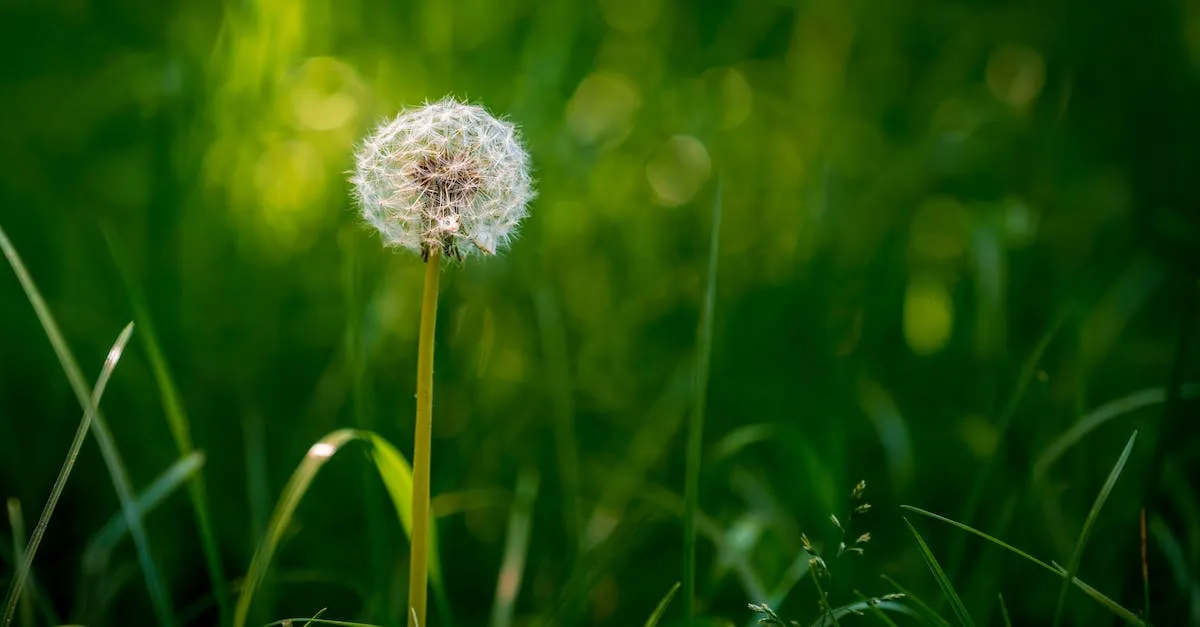The Most Prevalent Weeds In Southern California And How To Control Them
Weeds are the bane of every gardener’s existence, even in sunny Southern California. If you’re struggling to control weeds, knowing which ones tend to thrive in SoCal is key. The most common weeds are crabgrass, dandelion, purslane, oxalis, and bindweed. But there are effective ways to tackle each of these stubborn plants.
In this comprehensive guide, we’ll identify the characteristics of Southern California’s most widespread weeds. We’ll provide details on the growing habits of each weed and give tips for controlling them organically or with targeted herbicide use. By the end, you’ll be armed with the know-how to banish the most common weeds from your SoCal lawn and garden for good.
Crabgrass
Identification
Crabgrass is one of the most common and troublesome weeds found in Southern California. It is an annual weed that thrives in warm climates and can quickly take over lawns, gardens, and other areas. One of the key characteristics of crabgrass is its low-growing, spreading habit.
The grass-like leaves are light green and have a coarse texture. Crabgrass can be identified by its distinctive seed heads, which resemble crab legs and can reach up to 6 inches in height.
Growth Habits
Crabgrass is a fast-growing weed that spreads through seeds and root systems. It tends to thrive in areas with thin or bare soil, making it particularly problematic for lawns that are not properly maintained.
The seeds of crabgrass can remain dormant in the soil for several years, making it difficult to completely eradicate. Additionally, crabgrass is known for its ability to withstand drought conditions, making it even more resilient.
Control Methods
Controlling crabgrass requires a combination of preventive measures and targeted treatments. One of the most effective ways to prevent crabgrass is to maintain a healthy, thick lawn. Regular mowing, proper watering, and adequate fertilization can help create an environment that is less conducive to weed growth.
It is also important to remove any existing crabgrass plants before they have a chance to produce seeds and spread further.
For small infestations, hand-pulling crabgrass can be effective, especially when done early in the season. However, for larger areas or more persistent infestations, herbicides may be necessary. Pre-emergent herbicides can be applied in early spring to prevent crabgrass seeds from germinating, while post-emergent herbicides can be used to target existing plants.
It is important to follow the instructions on the herbicide label and use caution to avoid damaging desired plants.
For more information on crabgrass identification and control, visit the Old Farmer’s Almanac website.
Dandelion
Identification
Dandelions are a common weed found throughout Southern California. They are easily identifiable by their bright yellow flowers that turn into fluffy white seed heads. The leaves are jagged and tooth-shaped, forming a rosette shape close to the ground.
Dandelions have a long taproot that helps them survive in dry conditions.
Growth Habits
Dandelions are perennial weeds that can grow in a variety of environments. They thrive in lawns, gardens, and open fields, often crowding out desirable plants. Dandelions have a high reproductive capacity, with each plant capable of producing thousands of seeds that can be carried by the wind over long distances.
They are quick to sprout and can establish a strong root system in a short period, making them difficult to eradicate.
Control Methods
Controlling dandelions requires a combination of prevention and management strategies. Regular mowing and proper lawn care practices can help prevent dandelion infestations. Removing the entire taproot is important when manually pulling dandelions, as any remaining root fragments can regenerate.
Herbicides can be effective in controlling dandelions, but it is essential to choose the right product and follow the instructions carefully to avoid harming desirable plants. Organic options, such as vinegar or boiling water, can also be used as spot treatments.
It is important to note that dandelions can quickly reestablish if not properly managed, so persistence is key in controlling this common weed.
For more information on dandelion control and other weed management strategies, visit UC Agriculture and Natural Resources.
Purslane
Identification
Purslane, scientifically known as Portulaca oleracea, is a common weed found in Southern California. It is an annual succulent with thick, fleshy leaves that are oval or spoon-shaped. The leaves of purslane are typically green, but can also have a reddish tint.
The plant produces small, yellow flowers that bloom from summer to fall.
Growth Habits
Purslane is a fast-growing weed that thrives in warm and sunny environments. It can be found in a variety of habitats, including lawns, gardens, and agricultural fields. This weed has a prostrate growth habit, meaning it grows close to the ground and spreads out horizontally.
Purslane has a shallow root system and can quickly multiply, forming dense mats of vegetation.
Control Methods
Controlling purslane can be challenging due to its ability to produce numerous seeds and its resilience to many control methods. However, there are several strategies you can employ to manage this weed:
- Hand-pulling: For small infestations, manually removing purslane by hand can be effective. Be sure to remove the entire plant, including the roots, to prevent regrowth.
- Mulching: Applying a layer of organic mulch around plants and in garden beds can help suppress the growth of purslane by blocking sunlight and preventing seed germination.
- Herbicides: If purslane infestations are extensive, herbicides can be used as a last resort. It is important to choose a herbicide that is labeled for use on purslane and follow the instructions carefully to ensure effective control.
For more detailed information on managing purslane and other common weeds in Southern California, you can visit the University of California’s Weed Research and Information Center website.
Oxalis
Oxalis, also known as sourgrass or wood sorrel, is one of the most prevalent weeds in Southern California. It is a perennial plant that is known for its heart-shaped leaves and yellow flowers. While it may look appealing in some landscapes, it can quickly take over lawns, gardens, and other areas if left unchecked.
Identification
The most distinctive feature of oxalis is its shamrock-shaped leaves, which can be green or purple depending on the species. The leaves are composed of three leaflets and have a sour taste when chewed. The plant also produces small, yellow flowers that bloom from spring to summer.
Growth Habits
Oxalis spreads through underground rhizomes and seeds, allowing it to rapidly colonize an area. It thrives in moist soil and can tolerate both sun and shade, making it a common sight in lawns, gardens, and even potted plants.
Once established, oxalis can be difficult to eradicate due to its ability to regrow from small root fragments.
Control Methods
Controlling oxalis requires a combination of manual and chemical methods. Here are some effective strategies:
- Hand Pulling: For small infestations, hand pulling can be an effective method of control. Be sure to remove the entire root system to prevent regrowth.
- Mulching: Applying a layer of mulch around plants can help suppress oxalis growth by blocking sunlight and preventing the germination of seeds.
- Herbicides: In cases of severe infestation, herbicides may be necessary. Selective herbicides that target broadleaf weeds can be effective against oxalis while sparing desirable plants. It is important to follow the instructions on the label and use herbicides responsibly.
Regular maintenance, such as mowing and watering properly, can also help prevent the spread of oxalis. By staying vigilant and addressing oxalis infestations early on, homeowners can keep this invasive weed under control and maintain a healthy and beautiful landscape.
For more information on oxalis control and other weed management strategies, visit ucanr.edu.
Bindweed
Identification
Bindweed, also known as morning glory, is one of the most common and invasive weeds found in Southern California. It is a perennial vine that can grow up to 10 feet long and has heart-shaped leaves. The flowers of bindweed are trumpet-shaped and can be white or pink in color.
The plant spreads through an extensive root system, making it difficult to control.
Growth Habits
Bindweed thrives in warm and sunny conditions, making it particularly problematic in Southern California’s climate. It can be found in gardens, lawns, and agricultural fields, as well as along roadsides and in open areas.
The weed has a rapid growth rate and can quickly overtake plants and smother them, reducing their ability to grow and thrive.
Control Methods
Controlling bindweed can be challenging due to its extensive root system and ability to regenerate from small root fragments. However, there are several methods that can help manage its growth:
- Hand pulling: Small infestations of bindweed can be managed by hand pulling. It is important to remove as much of the root system as possible to prevent regrowth. Regular monitoring and follow-up treatments are necessary to ensure complete eradication.
- Mulching: Applying a thick layer of organic mulch can help suppress bindweed growth by blocking sunlight and preventing it from receiving essential nutrients. Mulching should be done before weed emergence and maintained regularly.
- Chemical control: Herbicides can be effective in controlling bindweed, but caution should be exercised to minimize harm to desirable plants. Non-selective herbicides can be used, but they may also kill other vegetation in the area.
Spot treatment with herbicides specifically designed for bindweed can be effective.
- Biological control: Introducing natural enemies of bindweed, such as certain insects or pathogens, can help control its growth. However, this method should be used with caution and under the guidance of experts to prevent unintended consequences.
It is important to note that proper identification of bindweed is crucial to ensure effective control methods are employed. Seek advice from local agricultural extension offices or consult reputable resources such as California Department of Food and Agriculture for more information on the identification and control of bindweed.
Conclusion
While managing weeds in Southern California can feel like an endless task, identifying the most common offenders is the first step. Armed with the details provided in this guide, you now have a battle plan to eradicate persistent weeds through proven organic methods or targeted herbicide use.
Pay special attention to crabgrass, dandelion, purslane, oxalis, and bindweed on your property. With vigilance and the right control tactics, you can reclaim your lawn and garden from these invasive plants.








